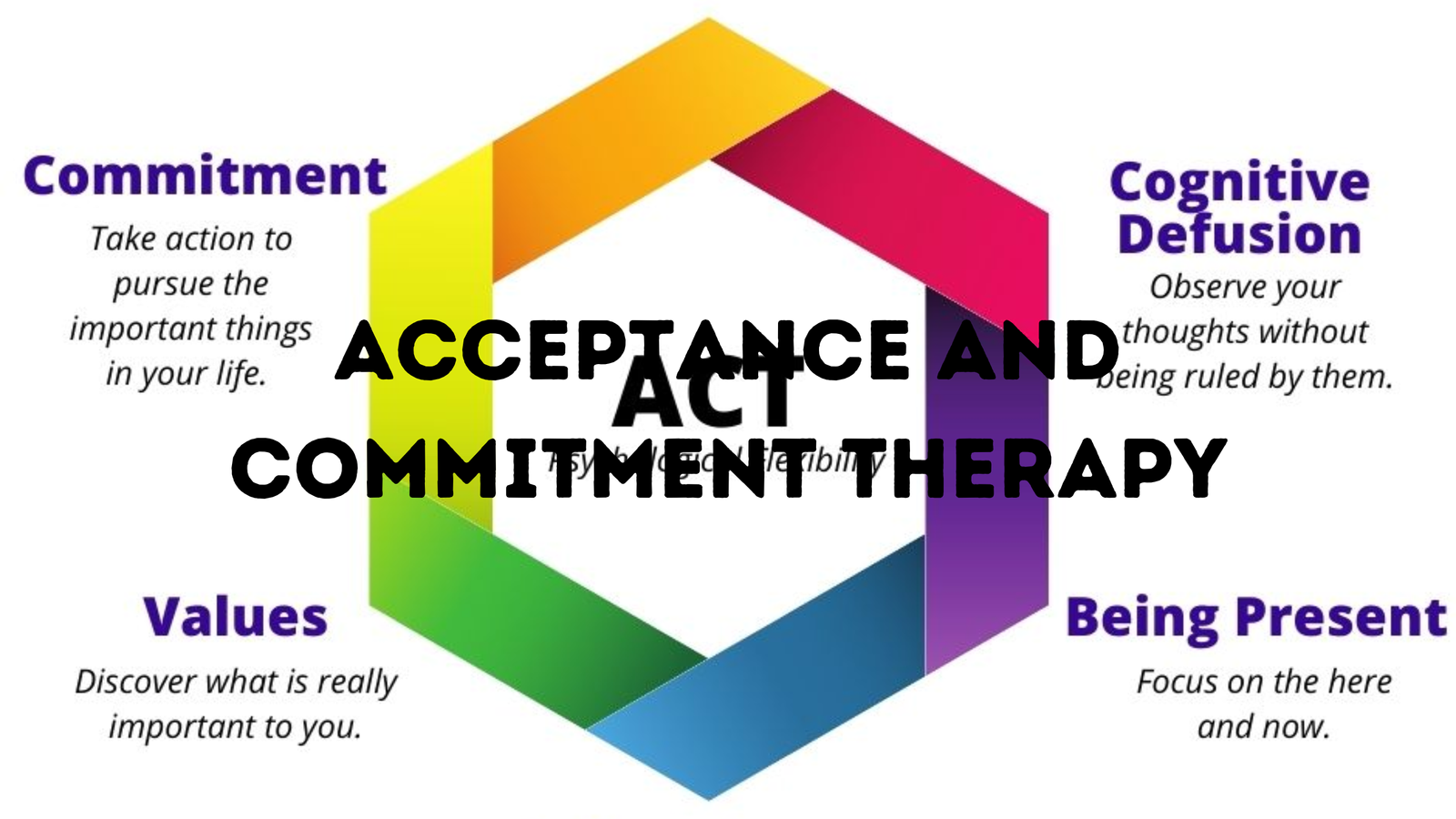
Understanding Cognitive Behavioral Therapy (CBT) Principles
Introduction
Cognitive Behavioral Therapy (CBT) is a widely recognized and effective form of psychotherapy that focuses on the connection between our thoughts, feelings, and behaviors. It is based on the principle that our thoughts influence our emotions and behaviors, and by changing our thoughts, we can change our emotional and behavioral responses.
The Structure of CBT
One of the key principles of CBT is its highly structured nature. CBT sessions are typically organized and follow a specific agenda. This structure helps both the therapist and the client to stay focused and work towards achieving specific goals. The structure of CBT sessions allows for a systematic approach to identifying and addressing problematic thoughts and behaviors.
During a CBT session, the therapist and the client collaborate to set an agenda, prioritize the issues to be discussed, and work through them systematically. This structure ensures that the therapy remains goal-oriented and time-efficient.
The Time-Limited Nature of CBT
Another important principle of CBT is its time-limited nature. Unlike some other forms of therapy that may continue for an indefinite period, CBT is typically conducted over a specific number of sessions. The exact duration of CBT can vary depending on the individual and the nature of their concerns. However, it is generally designed to be a relatively short-term therapy, ranging from 6 to 20 sessions.
The time-limited nature of CBT serves several purposes. Firstly, it helps to create a sense of urgency and motivation for both the therapist and the client to work towards achieving the desired outcomes within a specific timeframe. This can enhance the client’s commitment and engagement in the therapeutic process.
Secondly, the time-limited nature of CBT allows for a more focused and targeted approach to addressing specific issues. By setting clear goals and working towards them within a defined timeframe, CBT helps individuals to make significant progress in a relatively short period.
Benefits of the CBT Approach
The structured and time-limited nature of CBT offers several advantages for individuals seeking therapy:
1. Focus on Specific Issues:
CBT allows individuals to address specific concerns or issues that are causing distress in their lives. By targeting these specific issues, CBT helps individuals develop effective coping strategies and make positive changes in their thoughts and behaviors.
2. Measurable Progress:
The structured nature of CBT allows for the measurement of progress. By setting clear goals at the beginning of therapy and regularly evaluating progress, individuals can see tangible improvements in their thoughts, emotions, and behaviors. This can provide a sense of accomplishment and motivation to continue working towards their goals.
3. Time Efficiency:
CBT’s time-limited nature makes it a time-efficient form of therapy. It allows individuals to work towards their goals within a specific timeframe, reducing the need for long-term therapy. This can be particularly beneficial for individuals who are seeking help for specific issues and want to see results in a relatively short period.
4. Transferable Skills:
CBT equips individuals with valuable skills and techniques that can be applied beyond the therapy sessions. The strategies learned in CBT can help individuals manage stress, cope with challenges, and improve their overall well-being long after the therapy has ended.
Conclusion
Cognitive Behavioral Therapy (CBT) is a highly structured and time-limited form of therapy that focuses on the connection between thoughts, feelings, and behaviors. Its structured approach allows for a systematic exploration of problematic thoughts and behaviors, while its time-limited nature promotes focus, motivation, and measurable progress. CBT offers individuals the opportunity to address specific concerns, make positive changes, and acquire valuable skills for long-term well-being.
Learn More
Understanding Cognitive Behavioral Therapy (CBT) Principles
What is CBT?
Cognitive Behavioral Therapy (CBT) is a form of psychotherapy that focuses on the connection between thoughts, feelings, and behaviors. It is a widely used and evidence-based approach that helps individuals understand and change their patterns of thinking and behavior to improve their mental health and well-being.
CBT Principles
CBT is guided by several key principles that form the foundation of this therapeutic approach. These principles help therapists and clients work together to identify and address problematic thoughts and behaviors. Let’s explore three important CBT principles in detail:
CBT Emphasizes Collaboration and Active Participation
One of the fundamental principles of CBT is the emphasis on collaboration and active participation between the therapist and the client. In CBT, the therapist and client work as a team, with the therapist providing guidance and support while the client takes an active role in their own therapy.
This collaborative approach helps clients feel empowered and involved in the therapeutic process. It encourages them to take responsibility for their thoughts, feelings, and behaviors, and actively work towards change. Through open and honest communication, the therapist and client can build a strong therapeutic alliance and work together towards achieving the client’s goals.
CBT Initially Emphasizes the Present
Another important principle of CBT is the focus on the present moment. While past experiences and traumas can shape our thoughts and behaviors, CBT primarily concentrates on the here and now. By focusing on the present, CBT helps individuals identify and address current patterns of thinking and behavior that may be contributing to their distress.
By examining and challenging these present thoughts and behaviors, individuals can develop healthier coping strategies and make positive changes in their lives. CBT recognizes that while we cannot change the past, we have the power to shape our present and future by altering our thoughts and behaviors.
CBT Emphasizes Psycho-Education
Psycho-education is a key principle of CBT, which involves providing individuals with information and knowledge about their specific mental health condition or difficulties. This education helps clients better understand the connection between their thoughts, emotions, and behaviors. The therapist psycho-educates about the basics of CBT, CBT cognitive model, CBT Cognitive triad, CBT Cross-Bun model etc. so that the client is able to understand what the therapist is doing. Only when Psycho-education happens, Active participation of the client is possible.
Through psycho-education, individuals gain insight into the underlying causes of their distress and learn strategies to manage their symptoms effectively. They become aware of the cognitive distortions or negative thinking patterns that contribute to their distress and are equipped with tools to challenge and replace these unhelpful thoughts with more realistic and positive ones.
By educating clients about their condition and the therapeutic techniques used in CBT, individuals are empowered to take an active role in their own recovery and develop long-lasting skills to manage their mental health.
Conclusion
Cognitive Behavioral Therapy (CBT) is a highly effective therapeutic approach that helps individuals understand and change their patterns of thinking and behavior. The principles of CBT, such as collaboration and active participation, focus on the present, and psycho-education, guide therapists and clients in working together towards positive change.
By embracing these principles, individuals can gain insight into their thoughts and behaviors, develop healthier coping strategies, and ultimately improve their overall mental well-being.
Learn More
Understanding Cognitive Behavioral Therapy (CBT) and Its Key Concepts
Cognitive Behavioral Therapy (CBT) is a widely recognized and evidence-based form of psychotherapy that focuses on the connection between thoughts, emotions, and behaviors. Developed by Dr. Aaron T. Beck in the 1960s, CBT has since become one of the most effective and widely used therapeutic approaches for a range of mental health conditions.
What is CBT?
CBT is a goal-oriented therapy that aims to help individuals identify and change negative thought patterns and behaviors that contribute to their emotional distress. It operates on the premise that our thoughts influence our emotions, which in turn affect our behaviors. By identifying and challenging unhelpful thoughts and beliefs, individuals can develop more adaptive ways of thinking and coping with life’s challenges.
Who Developed CBT?
CBT was developed by Dr. Aaron T. Beck, a psychiatrist and psychotherapist, in the 1960s. Initially, Beck was working with patients suffering from depression and noticed that their thought patterns were consistently negative and distorted. He hypothesized that by challenging these negative thoughts and replacing them with more realistic and positive ones, he could help alleviate their symptoms. This led to the development of CBT as a structured and evidence-based approach to therapy.
30 Important Concepts of CBT
1. Automatic Thoughts: These are the immediate and often unconscious thoughts that arise in response to a situation or trigger.
2. Cognitive Distortions: These are irrational and inaccurate thought patterns that can lead to negative emotions and behaviors.
3. Core Beliefs: Deeply ingrained beliefs about oneself, others, and the world that shape our thoughts and behaviors.
4. Cognitive Restructuring: The process of identifying and challenging negative thoughts and replacing them with more realistic and positive ones.
5. Behavioral Activation: Engaging in activities that bring pleasure and a sense of accomplishment to counteract depression and low mood.
6. Exposure Therapy: Gradual and controlled exposure to feared situations or triggers to reduce anxiety and phobias.
7. Thought Record: A tool used to identify, analyze, and challenge negative thoughts and beliefs.
8. Socratic Questioning: A method of inquiry used to help individuals examine and challenge their thoughts and beliefs.
9. Self-Monitoring: Keeping track of thoughts, emotions, and behaviors to identify patterns and triggers.
10. Cognitive Triad: The interrelationship between thoughts, emotions, and behaviors.
11. Catastrophic Thinking: Exaggerating the potential negative outcomes of a situation.
12. Overgeneralization: Drawing broad conclusions based on limited evidence or a single negative experience.
13. Personalization: Assuming responsibility or blame for events that are beyond one’s control.
14. Filtering: Focusing only on the negative aspects of a situation while ignoring the positive.
15. Mind Reading: Assuming that we know what others are thinking or feeling without evidence.
16. All-or-Nothing Thinking: Viewing situations as either black or white, with no room for shades of gray.
17. Emotional Reasoning: Believing that our emotions reflect the objective reality of a situation.
18. Cognitive Behavioral Model: A visual representation of the relationship between thoughts, emotions, and behaviors.
19. Coping Skills: Strategies and techniques to manage stress, anxiety, and other emotional difficulties.
20. Homework Assignments: Tasks given to individuals to practice new skills and reinforce therapy sessions.
21. Relapse Prevention: Identifying and planning for potential setbacks to maintain progress.
22. Graded Exposure: Gradually increasing exposure to feared situations or triggers in a controlled manner.
23. Cognitive Reappraisal: Reevaluating and reframing thoughts and beliefs to change emotional responses.
24. Problem-Solving Skills: Techniques to identify and address specific problems or challenges.
25. Decatastrophizing: Challenging and reducing the perceived severity of a feared or negative outcome.
26. Assertiveness Training: Learning to express thoughts, feelings, and needs in a clear and respectful manner.
27. Self-Efficacy: Belief in one’s ability to successfully cope with and overcome challenges.
28. Goal Setting: Establishing specific, measurable, achievable, relevant, and time-bound objectives.
29. Thought Stopping: Interrupting and replacing negative thoughts with more positive or realistic ones.
30. Empirical Evaluation: Testing the validity of thoughts and beliefs through evidence and logical reasoning.
These concepts form the foundation of CBT and are used by therapists to help individuals gain insight, challenge unhelpful thoughts, and develop healthier coping strategies. By applying these concepts, individuals can experience significant improvements in their mental well-being and overall quality of life.
Learn More
Understanding Acceptance and Commitment Therapy: A Comprehensive Guide
Introduction
Acceptance and Commitment Therapy (ACT) is a form of psychotherapy that focuses on helping individuals develop psychological flexibility and live a more meaningful life. In this article, we will explore the history, principles, types, and benefits of ACT, as well as the role of ACT practitioners and possible treatment options.
History of Acceptance and Commitment Therapy
ACT was developed in the late 1980s by psychologist Steven C. Hayes and his colleagues. It is rooted in the contextual behavioral science tradition, which emphasizes the importance of understanding the context in which behavior occurs. ACT draws from various psychological approaches, including cognitive-behavioral therapy, mindfulness, and acceptance-based interventions.
What Acceptance and Commitment Therapy Practitioners Do
ACT practitioners work collaboratively with their clients to help them identify their values and take committed action towards those values, despite any uncomfortable thoughts, feelings, or sensations they may experience. They assist individuals in developing psychological flexibility, which involves being present in the moment, accepting difficult experiences, and taking actions aligned with one’s values.
Principles of Acceptance and Commitment Therapy
ACT is based on six core principles:
- Acceptance: Acknowledging and making room for unpleasant thoughts and emotions without trying to change or avoid them.
- Cognitive Defusion: Learning to observe thoughts and beliefs without getting entangled or fused with them.
- Being Present: Cultivating mindfulness and being fully engaged in the present moment.
- Self-as-Context: Recognizing that one’s thoughts, emotions, and sensations are transient experiences and not defining aspects of oneself.
- Values: Identifying what truly matters to an individual and using that as a guide for decision-making and behavior.
- Committed Action: Taking purposeful steps towards living a meaningful life in alignment with one’s values.
Various Types of Acceptance and Commitment Therapy
ACT can be delivered in different formats, including individual therapy, group therapy, and self-help resources. It can also be integrated into other therapeutic approaches. Some variations of ACT include:
- Acceptance and Commitment Training (ACT): A brief, skills-based intervention that focuses on developing psychological flexibility.
- Acceptance and Commitment Coaching (ACC): Applying ACT principles in a coaching context to help individuals achieve their goals and enhance performance.
- Acceptance and Commitment Rehabilitation (ACR): Using ACT in the context of physical rehabilitation to support individuals in adjusting to and coping with chronic pain or disability.
Benefits of Acceptance and Commitment Therapy
ACT has shown promising results in treating a wide range of psychological issues, including anxiety disorders, depression, substance abuse, chronic pain, and stress-related conditions. It can help individuals develop greater psychological flexibility, improve emotional well-being, enhance relationships, and increase overall life satisfaction.
Possible Treatment Conclusion
Acceptance and Commitment Therapy is a powerful approach that offers individuals the tools to navigate life’s challenges and live a more meaningful and fulfilling life. By accepting difficult experiences and committing to actions aligned with their values, individuals can develop psychological flexibility and cultivate a sense of well-being. Whether used in individual therapy, group settings, or self-help resources, ACT has the potential to create positive change and improve overall mental health.
Learn More
Understanding Counselling and Psychotherapy: Definitions, Differences, and Types
What is Counselling?
Counselling is a professional relationship between a trained counsellor and a client, aimed at helping the client explore and resolve personal, emotional, or psychological issues. It provides a safe and confidential space for individuals to discuss their concerns, gain insight into their feelings and behaviors, and develop coping strategies to improve their overall well-being.
There are several different definitions of counselling, but they all share the common goal of facilitating personal growth and positive change. Some definitions emphasize the supportive nature of counselling, while others highlight its problem-solving and goal-oriented approach.
What is Psychotherapy?
Psychotherapy is a form of therapy that focuses on helping individuals with more complex and deep-rooted psychological issues. It involves a therapeutic process that aims to increase self-awareness, promote personal development, and alleviate emotional distress.
Like counselling, psychotherapy also involves a professional relationship between a therapist and a client. However, it typically involves a longer-term commitment and a deeper exploration of the client’s thoughts, feelings, and behaviors.
Difference Between Counselling and Psychotherapy
The main difference between counselling and psychotherapy lies in the scope and depth of the issues addressed. Counselling is generally more short-term and focuses on specific problems or concerns, such as relationship issues, grief, or stress management. Psychotherapy, on the other hand, is often more long-term and deals with more complex psychological issues, such as trauma, personality disorders, or deep-seated emotional patterns.
While there is some overlap between the two, it is important to choose the right approach based on your specific needs and goals. A trained professional can help you determine which option is most suitable for you.
Different Types of Counselling
There are various types of counselling approaches, each with its own theoretical framework and techniques. Some common types include:
- Cognitive-Behavioral Therapy (CBT): Focuses on identifying and changing negative thoughts and behaviors that contribute to emotional difficulties.
- Psychodynamic Therapy: Explores unconscious patterns and unresolved conflicts that may be influencing current thoughts, feelings, and behaviors.
- Humanistic Therapy: Emphasizes self-exploration, personal growth, and the individual’s capacity for self-actualization.
- Family Therapy: Involves working with families to improve communication, resolve conflicts, and strengthen relationships.
The Counselling Process
The counselling process typically involves several stages:
- Assessment: The counsellor gathers information about the client’s concerns, history, and goals to understand their unique situation.
- Goal Setting: The client and counsellor collaborate to establish clear and achievable goals for the counselling sessions.
- Exploration: The client explores their thoughts, feelings, and behaviors in a safe and non-judgmental environment.
- Intervention: The counsellor provides support, guidance, and appropriate techniques to help the client address their concerns and work towards their goals.
- Evaluation: The progress is regularly reviewed, and adjustments are made to the counselling approach if necessary.
Directive Counselling and Non-Directive Counselling
Directive counselling and non-directive counselling are two different approaches within the field of counselling:
Directive Counselling: In this approach, the counsellor takes an active role in guiding the client towards specific goals and solutions. They may provide advice, suggestions, and practical strategies to address the client’s concerns.
Non-Directive Counselling: Also known as client-centered or person-centered counselling, this approach emphasizes empathy, active listening, and unconditional positive regard. The counsellor creates a supportive environment where the client can freely explore their feelings and thoughts without judgment or direction.
How to Choose a Counsellor?
Choosing a counsellor is an important decision that should be based on several factors:
- Qualifications and Credentials: Ensure the counsellor is licensed and has the necessary training and experience in the specific areas you need assistance with.
- Approach and Compatibility: Consider the counselling approach that aligns with your preferences and values. It is essential to feel comfortable and connected with the counsellor to establish a trusting therapeutic relationship.
- Referrals and Recommendations: Seek recommendations from trusted sources, such as friends, family, or healthcare professionals, who have had positive experiences with a particular counsellor.
- Cost and Accessibility: Consider the cost of counselling sessions and whether the counsellor’s location, availability, and mode of therapy (in-person or online) are convenient for you.
Becoming a Self-Counsellor
While seeking professional counselling is often beneficial, there are also ways to become a self-counsellor and practice self-care:
- Self-Reflection: Take time to reflect on your thoughts, feelings, and behaviors. Engage in journaling or mindfulness practices to gain insight into your emotional well-being.
- Self-Help Resources: Utilize self-help books, online resources, or support groups to learn coping strategies and gain a better understanding of your concerns.
- Self-Care Practices: Prioritize activities that promote your well-being, such as exercise, healthy eating, adequate sleep, and engaging in hobbies or activities you enjoy.
- Seeking Support: Reach out to trusted friends or family members for emotional support and guidance when needed.
Remember, self-counselling can be beneficial for personal growth and managing everyday challenges, but it is essential to seek professional help when dealing with more complex or persistent issues.
In conclusion, counselling and psychotherapy are valuable resources for individuals seeking support, guidance, and personal development. Understanding the definitions, differences, and various types of counselling approaches can help individuals make informed decisions about their mental health and well-being.
Learn More
Am I Depressed? 6 Signs You Should Know About
- You’ve been feeling low or irritable for most of the day, every day for two weeks or more. You might have found yourself worrying about past or future events for long periods of time, or simply feeling sad, cross or tearful. Sometimes it’s hard to recognize a gradual change – have others noticed that you don’t seem your usual self?
- You’ve lost interest in activities that you used to enjoy. Perhaps you have been seeing less of your friends or family recently, have stopped going to the gym, or cooking balanced meals. This is really about recognizing changes in what’s normal for you – no one is saying you have to exercise five times a week or eat your greens, but changes in your routine can offer concrete indications that your mood is changing.
- You are struggling to concentrate. You might notice that you struggle to focus when reading or watching television, for example, or to follow the thread of a spoken conversation. This could be affecting your performance at work, or limiting your ability to perform routine tasks such as food shopping. Again, we are looking for a change in what’s normal for you, so if concentration has always been something you find tricky there is little cause for concern.

In three words I can sum up everything I’ve learned about life: it goes on.
– Robert Frost

How to Talk About Your Mental Health
- You’ve been feeling low or irritable for most of the day, every day for two weeks or more. You might have found yourself worrying about past or future events for long periods of time, or simply feeling sad, cross or tearful. Sometimes it’s hard to recognize a gradual change – have others noticed that you don’t seem your usual self?
- You’ve lost interest in activities that you used to enjoy. Perhaps you have been seeing less of your friends or family recently, have stopped going to the gym, or cooking balanced meals. This is really about recognizing changes in what’s normal for you – no one is saying you have to exercise five times a week or eat your greens, but changes in your routine can offer concrete indications that your mood is changing.
- You are struggling to concentrate. You might notice that you struggle to focus when reading or watching television, for example, or to follow the thread of a spoken conversation. This could be affecting your performance at work, or limiting your ability to perform routine tasks such as food shopping. Again, we are looking for a change in what’s normal for you, so if concentration has always been something you find tricky there is little cause for concern.

In three words I can sum up everything I’ve learned about life: it goes on.
– Robert Frost

Depression: Not Just for Girls?
- You’ve been feeling low or irritable for most of the day, every day for two weeks or more. You might have found yourself worrying about past or future events for long periods of time, or simply feeling sad, cross or tearful. Sometimes it’s hard to recognize a gradual change – have others noticed that you don’t seem your usual self?
- You’ve lost interest in activities that you used to enjoy. Perhaps you have been seeing less of your friends or family recently, have stopped going to the gym, or cooking balanced meals. This is really about recognizing changes in what’s normal for you – no one is saying you have to exercise five times a week or eat your greens, but changes in your routine can offer concrete indications that your mood is changing.
- You are struggling to concentrate. You might notice that you struggle to focus when reading or watching television, for example, or to follow the thread of a spoken conversation. This could be affecting your performance at work, or limiting your ability to perform routine tasks such as food shopping. Again, we are looking for a change in what’s normal for you, so if concentration has always been something you find tricky there is little cause for concern.

In three words I can sum up everything I’ve learned about life: it goes on.
– Robert Frost
How Music Affects Our Subconscious
- You’ve been feeling low or irritable for most of the day, every day for two weeks or more. You might have found yourself worrying about past or future events for long periods of time, or simply feeling sad, cross or tearful. Sometimes it’s hard to recognize a gradual change – have others noticed that you don’t seem your usual self?
- You’ve lost interest in activities that you used to enjoy. Perhaps you have been seeing less of your friends or family recently, have stopped going to the gym, or cooking balanced meals. This is really about recognizing changes in what’s normal for you – no one is saying you have to exercise five times a week or eat your greens, but changes in your routine can offer concrete indications that your mood is changing.
- You are struggling to concentrate. You might notice that you struggle to focus when reading or watching television, for example, or to follow the thread of a spoken conversation. This could be affecting your performance at work, or limiting your ability to perform routine tasks such as food shopping. Again, we are looking for a change in what’s normal for you, so if concentration has always been something you find tricky there is little cause for concern.

In three words I can sum up everything I’ve learned about life: it goes on.
– Robert Frost
In three words I can sum up everything I've learned about life: it goes on.
Depression: Which Therapy is Right for Me?
- You’ve been feeling low or irritable for most of the day, every day for two weeks or more. You might have found yourself worrying about past or future events for long periods of time, or simply feeling sad, cross or tearful. Sometimes it’s hard to recognize a gradual change – have others noticed that you don’t seem your usual self?
- You’ve lost interest in activities that you used to enjoy. Perhaps you have been seeing less of your friends or family recently, have stopped going to the gym, or cooking balanced meals. This is really about recognizing changes in what’s normal for you – no one is saying you have to exercise five times a week or eat your greens, but changes in your routine can offer concrete indications that your mood is changing.
- You are struggling to concentrate. You might notice that you struggle to focus when reading or watching television, for example, or to follow the thread of a spoken conversation. This could be affecting your performance at work, or limiting your ability to perform routine tasks such as food shopping. Again, we are looking for a change in what’s normal for you, so if concentration has always been something you find tricky there is little cause for concern.

In three words I can sum up everything I’ve learned about life: it goes on.
– Robert Frost

